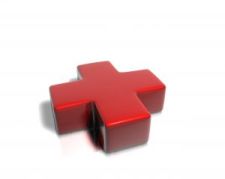What does an Ebola protective suit consist of

To date, Ebola has killed nearly 7,000 people across the world. Once a person develops the disease, they can easily spread it to others, especially those that nurse them. The sicker a patient becomes the higher the viral load in their body is, and the easier it is for those who nurse them to catch the disease from their bodily fluids.
For this reason, there are strict protocols in place for nursing staff that have direct contact with those infected with Ebola. Anyone who nurses someone with the disease, or is involved in burying the dead, has to wear protective clothing to ensure they are not exposed to the bodily fluids that are a vector for the virus.
The right protective kit consists of a full-length suit. Wellingtons, gloves, a face mask, an apron, goggles and a hood. These are the basic components of the personal protective equipment (PPE), that trials in the field have shown to afford a high level of protection from the virus.
Below, we explain the standard each component of the PPE needs to meet:
Suit
The biggest component of the PPE, this needs to be an all-in-one suit and should include a hood, as this is the best way to ensure that every inch of the skin is covered. Stitched and taped seams ensure there is no way in for the virus.
Thumb loops make sure that the sleeves stay pulled down and do not ride up during use. The waist, hood, wrists and ankles needs to be elasticated to ensure that the suit stays in place and fits snugly.
The distinctive bright yellow suit you have probably seen worn by professionals in the fight against Ebola is most likely to be the Tychem C coverall, made by DuPont.
Mask
A good example of the type of item worn by those in the field is the Respair P3, a disposable FFP3 non-valved respiratory mask. This was developed as a direct result of the 2014 Ebola outbreak.
Made from material that protects against both solid and liquid particulates, including oil-based mists, the mask has a bill that holds the material away from the wearer’s mouth and protects both the nose and mouth. It includes a bi-directional filter.
Goggles and face shield
It is particularly important that the eyes are covered during Ebola treatment. For this reason, a pair of goggles must be worn, and needs to be adjustable to ensure a tight fit. In some facilities, a face shield is part of the outfit as well.
Boots
Boots need to be waterproof, so medical grade wellingtons are the order of the day. Single-use impermeable boot covers are worn over the top.
Gloves
Two layers of nitrile examination gloves need to be worn. Both pairs of gloves should have extended cuffs.
Apron
Lastly, a disposable apron is worn over the top of the suit. This has to be at least calf length, but in most clinics, a longer apron is worn that comes at least to the top of the wellingtons.
Most of the equipment is disposable, although any that isn’t has to be washed down with a strong disinfectant mix. Any surface the sick person may have touched should also be washed down with an effective disinfectant, as the virus can survive on surfaces for several hours.
Bio:
John Murray writes for CombatNorovirus.com, the website for Noroclear, which is the only cleaning product proven to combat norovirus and wipe out an extensive range of bugs within 60 seconds of application.